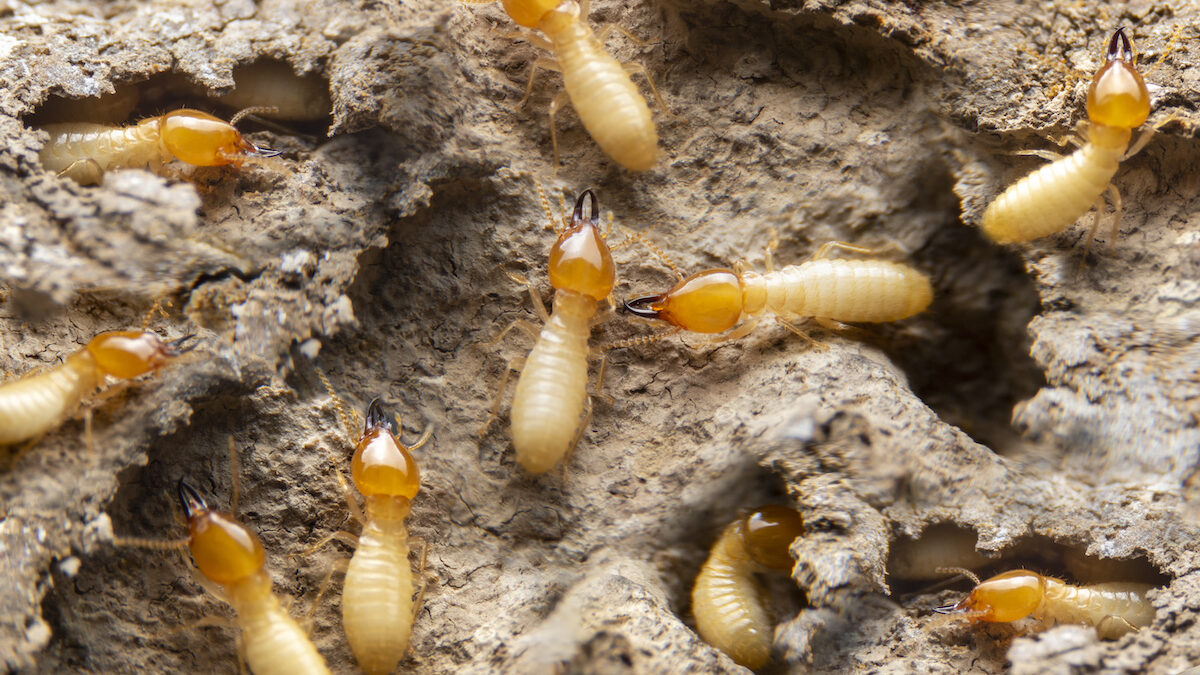
Termites, often referred to as the silent destroyers, are small insects known for their incredible ability to cause extensive damage. These tiny creatures may seem harmless, but they are responsible for numerous cases of structural damage to homes and buildings worldwide. With their insatiable appetite for wood and cellulose materials, termites can quickly chew through beams, flooring, and even wallpaper, leaving devastation in their wake.
While termites may not be the most pleasant topic of conversation, learning about these fascinating insects can help homeowners and pest control professionals in protecting their properties. In this article, we’ll delve into 15 interesting facts about termites that will change the way you perceive these seemingly insignificant creatures.
Key Takeaways:
- Termites are highly social insects that play a crucial role in nature by decomposing dead plant material and returning nutrients to the soil. They are important for the ecosystem despite being pests for homeowners.
- Termites have a voracious appetite for wood and cellulose materials, causing significant damage to structures. Their advanced communication, long lifespan, and skilled tunnel-building abilities make them fascinating creatures with both pest and ecological importance.
Termites are social insects
Termites are known for their highly social behavior, living in large colonies and working together towards the survival of the group. They have a caste system, with different roles assigned to each member.
Termites are found worldwide
These little creatures can be found on every continent except Antarctica. They thrive in warm and humid environments and are commonly found in tropical and subtropical regions.
Termites are important decomposers
Although they are considered pests when they invade human structures, in nature, termites play a crucial role in breaking down dead plant material and returning nutrients to the soil.
Termites are pests for homeowners
Termites can cause significant damage to wooden structures, leading to costly repairs. They feed on cellulose present in wood and other plant materials, making houses and furniture their preferred targets.
Termites have a voracious appetite
These tiny insects can consume large amounts of wood and other cellulose materials, thanks to the help of symbiotic microorganisms present in their digestive system.
Termites are eusocial insects
Termites exhibit a high level of social organization, similar to ants and bees. They have specialized roles such as workers, soldiers, and reproductive individuals, each with a specific function within the colony.
Termites have advanced communication systems
Termites communicate through a variety of chemical signals and vibrations. They use pheromones to convey messages about food sources, reproduction, and danger to other members of the colony.
Termites have wings during their reproductive stage
When termites reach maturity and are ready to start new colonies, they develop wings and engage in a nuptial flight. This is when the winged termites, also known as alates, mate and search for suitable nesting sites.
Termites can cause allergic reactions
For some individuals, exposure to termite droppings or shed skins can trigger allergic reactions, such as asthma and skin irritations. It is important to seek professional help in dealing with termite infestations.
Termites have an important role in the ecosystem
While termites may be considered pests in human settlements, they provide valuable ecosystem services such as nutrient cycling and soil improvement. They also aerate the soil, enhancing its fertility.
Termites are found in diverse habitats
Termites can inhabit a wide range of ecosystems, including grasslands, deserts, and even mountains. They have adapted to various climatic conditions and can survive in both dry and wet environments.
Termites have a long lifespan
Individual termites can live for several years, depending on their caste and species. The queen termite, responsible for reproduction, can live for up to 50 years, ensuring the longevity of the colony.
Termites are skilled tunnel builders
Termites construct intricate networks of tunnels and galleries using saliva, feces, and tiny wood particles. These tunnels serve as a means of transportation, protection, and for maintaining the proper humidity levels within the colony.
Termites live in large colonies
A single termite colony can consist of thousands to millions of individuals. The size and structure of the colony depend on the termite species and environmental conditions.
Termites help with decomposition in forests
Termites play a crucial role in breaking down dead trees and woody debris in forests, contributing to the natural cycle of decomposition. They help recycle nutrients back into the ecosystem.
These are just 15 of the many fascinating facts about termites. Whether you view them as pests or appreciate their ecological importance, there’s no denying their incredible abilities and social behavior. Next time you spot a termite or notice signs of their presence, you’ll have a deeper appreciation for these small but mighty creatures.
Conclusion
Termites may be tiny insects, but they wield a mighty impact on our world. With their insatiable appetite for wood and remarkable ability to construct complex societies, termites are a fascinating and often misunderstood species. From their ecological importance to their unique characteristics and behaviors, understanding termites can help us better appreciate the intricate balance of nature.
As we’ve learned from the 15 facts about termites, these small creatures play a significant role in the ecosystem, both in breaking down decaying material and providing shelter to countless other organisms. Their ability to build massive structures demonstrates their architectural prowess, while their social structure showcases their strong sense of cooperation and division of labor.
Whether you admire their resilience or fear their destructive potential, there is no denying the intriguing nature of termites. So the next time you spot a termite mound or encounter these resilient insects, take a moment to appreciate the remarkable world of termites that exists just beneath our feet.
FAQs
Q: How long do termites live?
A: The lifespan of termites varies depending on the species, but worker termites can live anywhere from one to two years, while queen termites can live for several decades.
Q: Are termites harmful to humans?
A: While termites are not harmful to humans directly, they can cause significant damage to wooden structures and furniture, leading to costly repairs if left untreated.
Q: Can termites fly?
A: Yes, some termite species have wings and are capable of flying. These winged termites, known as swarmers, are usually reproductive individuals searching for a new colony to establish.
Q: How do you identify a termite infestation?
A: Common signs of a termite infestation include hollow-sounding wood, discarded wings, mud tubes on walls or foundations, and small piles of fecal pellets near infested areas.
Q: Can termites be controlled or eliminated?
A: Yes, professional pest control treatments can effectively control and eliminate termite infestations. It is recommended to contact a licensed pest control expert for proper assessment and treatment options.
Q: Are termites beneficial to the environment?
A: Yes, termites play a crucial role in the ecosystem by breaking down decaying plant matter, aiding in nutrient recycling, and aerating the soil. They also provide food for many other animals.
Q: Do termites bite humans?
A: Termites rarely bite humans. Their primary focus is on consuming wood and cellulose-based materials, not human flesh.
If you found these termite facts intriguing, why not explore the world of other fascinating insects? Anteaters, with their unique adaptations for hunting and consuming ants and termites, have many surprising characteristics that will leave you in awe. Numbats, another insectivorous mammal native to Australia, also boast a range of interesting features and behaviors. Delve into the lives of these incredible creatures and uncover the astonishing facts that make them stand out in the animal kingdom.
Was this page helpful?
Our commitment to delivering trustworthy and engaging content is at the heart of what we do. Each fact on our site is contributed by real users like you, bringing a wealth of diverse insights and information. To ensure the highest standards of accuracy and reliability, our dedicated editors meticulously review each submission. This process guarantees that the facts we share are not only fascinating but also credible. Trust in our commitment to quality and authenticity as you explore and learn with us.


